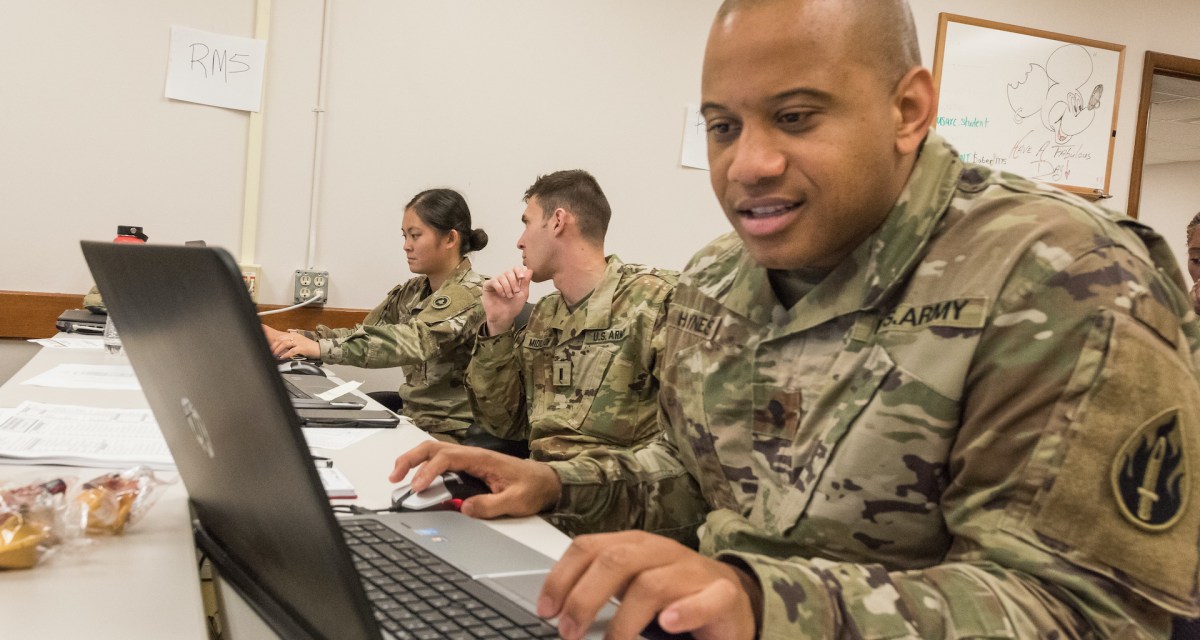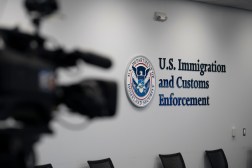DOD takes automation a step further with machine learning

Automating tasks has long been a goal of large workforces, and none is larger than the Department of Defense.
With financial management systems that process a more than $700 billion budget annually, getting a helping (digital) hand can reduce wasted labor hours and costly mistakes. But simple automation sometimes is not enough to help solve more complex challenges, like pairing unmatched transactions in databases.
That’s why the Defense Innovation Unit teamed up with the Joint Artificial Intelligence Center to inject a boost of machine learning so that robotic process automation (RPA) can approach more complex tasks, like finding mislabeled and unmatched transactions.
“The DOD has been using RPAs for several years to help fix [unmatched transactions], but RPAs are based on simple ‘if-then-else’ cases where most of the [unmatched transactions] require more sophisticated analysis, which up to now have required manual intervention,” said Eric Dorsey, a DIU program manager in the AI portfolio.
The specific problem of unmatched funds wastes millions of labor hours each year, according to the DOD. When dollars are misclassified or unmatched, humans need to go into the spreadsheets to correct the record, often a roughly two-hour job per unmatched data point. With the Army’s two million unmatched transactions per year, that’s millions of hours spent on tasks DIU is proving robots can easily do.
Most RPA bots are limited to small, repetitive tasks where operations are explicitly written into software, limiting the program’s flexibility in uncertain scenarios. But using the massive amount of financial data from the DOD’s systems, machine learning is now being used to help advance RPA’s flexibility to solve problems, saving time and money, according to the department.
“After the machine learning front end creates candidate correction, it is routed to an RPA for the final database update,” Dorsey said in an email to FedScoop.
Machine learning finds knowledge within data, learning from massive data sets to find patterns and turn them into predictable algorithms. The data generated through financial systems provide ample information for machine learning to work through and improve RPA’s ability to close the loop on certain tasks, like matching unmatched funds.
DIU paired contractors DataRobot with the Army and Summit2Sea with DOD’s Office of the Comptroller. Both are developing their machine learning platforms within Advana, the government’s secure data management cloud, according to DIU.
Time and money saved
A solicitation for the problem was initially posted in May 2020 with the request to find a machine learning platform that “will identify and suggest corrections to business processes that are not limited to previously well-defined business logic methods.”
The two pilots do not yet cover 100 percent of the unmatched transactions, but they are currently on a “high volume” of use cases.
“We are currently achieving a high level of accuracy with these use cases,” Dorsey said.
It also happening quickly. Because DIU is able to work with commercial and non-traditional vendors by navigating around the traditional contracting morass the department usually goes through, there haven’t been the typical lengthy request for proposals filled with stringent requirements and government legalese — just problem statements and requests for solutions.
Working with the JAIC, DIU helped save time and effort in building out the machine learning algorithms.
“The collective team identified the unmatched transaction use case to be highly suitable for automation while delivering significant mission impact,” Bryan Lane, chief of business and health transformation with the JAIC, said.

This story was featured in FedScoop Special Report: Automating Government Services - A FedScoop Special Report




